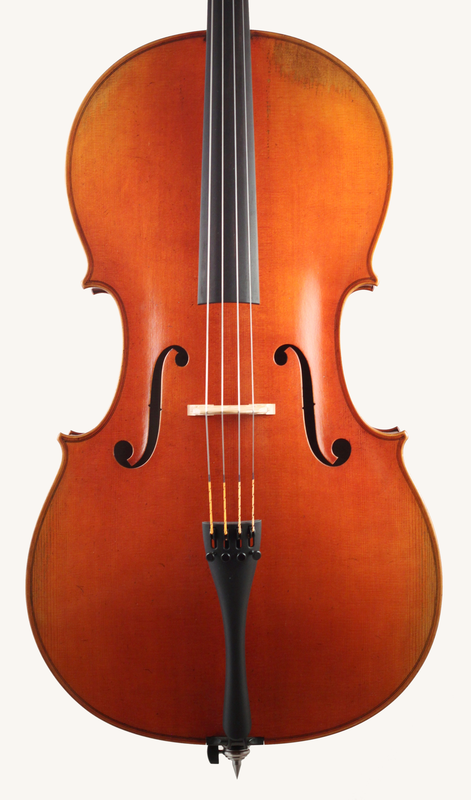

The fixed point of contact of the fingertip on the string absorbs this motion by rocking back and forth, with the thumb typically aligned with the middle finger. It is not created by an upper arm motion rather, it is more of forearm motion. Vibrato is an expressive technique that is imitative of the voice in the wavering of the pitch up and down. In slower, or more expressive playing, the contact point can move slightly away from the nail to the pad of the finger, allowing a fuller vibrato. If a finger is required on two (or more) strings at once to play perfect fifths (in double stops or chords) it is used flat. The fingers are normally held curved with each knuckle bent, with the fingertips in contact with the string. In the neck positions (which use just less than the half of the fingerboard nearest the top of the instrument), the thumb rests on the back of the neck in thumb position (a general name for notes on the remainder of the fingerboard) the thumb usually rests alongside the fingers on the string and the side of the thumb is used to play notes. Stopping the string closer to the bridge results in higher-pitched sound because the vibrating string length has been shortened. The fingertips of the left hand stop the strings along their length, determining the pitch of each fingered note. Left-hand technique Cello first position fingering chart. In such a situation, the player must decide whether or not to reverse the set-up of the cello (the string positions, bass-bar, sound post, fingerboard shape, and bridge carving are all asymmetrical). In rare cases, a player has used a mirror-image posture-usually because of a physical disability of the arm or hand that makes the required technique impossible for that side of the body. A player's handedness does not alter the way the cello is held or used. In early times, female cellists sometimes played side-saddle, since it was considered improper for a lady to part her knees in public. The bow is drawn horizontally across the strings. The neck of the cello is positioned above the player's left shoulder, while the C-String tuning peg is positioned just behind the left ear. The cello is steadied on the lower bout between the knees of the seated player, and on the upper bout against the upper chest. Its weight is supported mainly by its endpin, or spike, which rests on the floor.

The right hand plucks or bows the strings to sound the notes.īody position Four cellists practicing. The fingertips of the left hand stop the strings on the fingerboard to determine the pitch of the fingered note. Playing the cello is done while seated with the instrument supported on the floor. A cellist demonstrating playing technique This article is about cello techniques used in Western classical music.


 0 kommentar(er)
0 kommentar(er)
